
Weld Coxe, Hon. AIA — Professional Services Visionary and Thought Leader
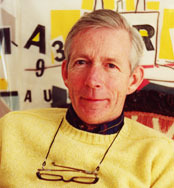
Weld Coxe, Founder of The Coxe Group
Last Friday, I learned that Weld Coxe died on March 15, 2011. I hope that all of us who knew Weld will have an opportunity to raise our voices in celebration of a man who had such a remarkable effect on so many people and firms.
In 1977, I had the honor to meet Weld and then to become friends with him, which led to working with him first as a client and then as a consulting colleague in The Coxe Group. He was always exceedingly generous as well as insatiably curious, with great good humor and a real joie de vivre. I think one of the secrets of his success was that he truly enjoyed learning from many diverse people and then sharing ideas with all of us.
Edward Keegan covered the basics of Weld’s professional life in his article posted on ARCHITECT online. I noted a couple of things that probably would have caused Weld to pick up the phone or send a note — Weld studied at Harvard College (not University — he was always careful to make the distinction), and the AIA’s Code of Ethics changed in the 1970s.1
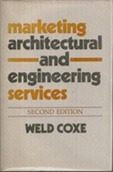
I’m making a point of the ethics date issue because in the late 1960s and early 1970s, when Weld was writing his seminal book Marketing Architectural and Engineering Services (and when I began working in architecture), architects were not allowed to advertise or promote themselves in unseemly ways.2 In today’s world of marketing and (especially) social media, almost everything we do would have been considered to be unethical.
At that time, there were architects who were brilliant marketers—Vincent Kling (“The Silver Fox,” with whom Weld worked at Vincent G. Kling & Associates, in his first job in architecture); Bill Caudill at CRS (who pulled together remarkable talent and was a source of extraordinary leadership); George Hellmuth (co-founder of HOK, the business brains behind the firm); Nathaniel Owings (founder of SOM, who had worked in summer stock as a young man and was a force to be reckoned with in terms of strategy and showmanship); Jack Warnecke (of his eponymous firm, also known for his friendship with President and Mrs. John F. Kennedy). All of them leveraged the power of public relations; however, architects and engineers were constrained by the ethics rules, limited to conducting marketing through their personal relationships, design competitions, and government contracting (often politically influenced), combined with very careful public relations and social networking (the old-fashioned kind — in person, letter-writing, or over the telephone).
Weld’s “intention to lift the veil of mystery” about promotion and business development was no doubt viewed by many architects and engineers as heresy. For many others, his theories not only had great resonance, but his book also became THE marketing bible in our industry, especially after the recession of 1974, when most of us in the A/E world found ourselves in dire need of work.
I’ll leave it to the founders and early members of the Society for Marketing Professional Services to tell their stories about Weld’s influence on SMPS, which has itself had a major impact on the development of marketing and business development as an essential element in the AEC industry. I thought I would share a few of the game-changing ideas that I credit to Weld:
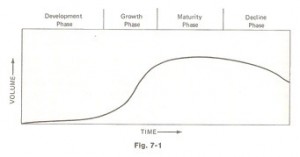
Product Life Cycle
1. The Levitt Curve – Theodore Levitt was a professor at the Harvard Business School and an editor of the Harvard Business Review. He is credited with coining the term “globalization” in 1983. Back in 1965, Levitt wrote “Exploit the Product Life Cycle” for HBR, and Weld recognized the need for us to learn how it applied to marketing professional services, so he introduced us to it in his books, consulting, and lectures.
2. The Professional Services Client – Weld said, “The fact is that architects, engineers, and other design professionals don’t set the rules by which they compete: Their clients do.” He understood that the most successful firms knew how to identify their best potential clients and build relationships with them.
3. The Closer/Doer – Weld defined this role for the A/E profession. In his book, he said, “Those who can get the work, run the firm.” (He also told us that if you could bring in work, you didn’t have to work for anybody else.) In the 1983 edition of Marketing Architectural and Engineering Services, he said, “The choice of marketing organization structure should be made according to how the closers want to operate.” 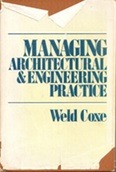
In addition: In the 1960s and early 70s, many marketing organizations built around charismatic closers and separate doer/project managers were very successful. But in recent years clients have demonstrated a clear preference for marketing organizations composed of closer-doers, where the sale is made by the professional who assures the client they will be personally involved, to a credible degree, during the execution of the project.”
To this day, many of us still use the organizational diagrams that Weld developed in his consulting, which were published in his second book, Managing Architectural and Engineering Services in 1980.
4. The Marketing Coordinator – I believe that Weld created the position of Marketing Coordinator, and then he reinforced it by introducing The Marketing Coordinator Clinic under the aegis of The Coxe Group. The Clinic was the place where thousands of people learned marketing basics and then took that information back to their firms.
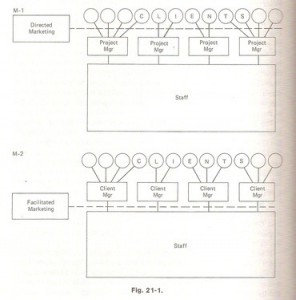
5. Marketing + Management – I remember Weld telling us that a firm couldn’t market effectively unless it was also managed effectively. When he consulted, he tried to ensure that the firm leaders looked at their firm holistically, and in his seminars, he included a boot camp on business basics like understanding financial statements (P/L and Balance Sheet). Toward that purpose (and also to extend his own range of knowledge, I suspect), he brought a spectrum of collaborative experts to The Coxe Group.
6. Behavioral Psychology – I believe that Weld was the first to bring behavioral psychology to management consulting in the A/E industry. When Weld was our consultant at RMW, Boyce Appel was part of The Coxe Group, and Weld recommended that we work with him to sort through some issues related to interpersonal relationships and organizational development. It was a tough process, and it may have ultimately contributed to a number of us leaving the firm, but it was very innovative and definitely the right thing to have done.
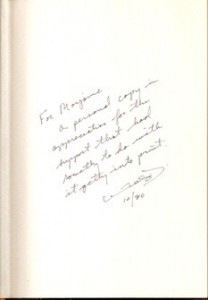
Inscription: Managing Architectural and Engineering Services, 1980
Finally, a personal note — When I met Weld, I was 30 years old. Although the partners at SOM traveled on business a lot, Weld was the first real “road warrior” I ever knew. It seemed as though he was always traveling, and he went first-class. He knew that he needed the extra amenities to survive his schedule, but it also contributed to his “expert advisor” aura. And it would give him time to write or just think. He always carried stationery with him, and after one of his visits, I’d often receive a note in his distinctive handwriting, with some thoughtfully penned words.
I last saw Weld in 2004, when he was in Boston to take his wife to the airport for a flight to India, and I was in Cambridge to teach at the Harvard Graduate School of Design with my consulting partners, Nancy Egan FSMPS and Paul Nakazawa. It was through Weld that I had met Nancy in 1984, and they had a wonderful relationship as well, but Paul and Weld had never met, so it was a good opportunity to get us all together. After drinks and conversation, Weld and I had dinner. He was always very careful about his diet, and he was very thin, but he boasted that he was the same weight that he had been in college. His mind, of course, was as agile and fertile as ever, and it was a wonderful visit.
I can honestly say that if I hadn’t met Weld, I’m not sure what I would be doing today. Back in the early 1980s, I was at a crossroads. I was considered going to law school, and without his wisdom and influence, I might have done that. Instead, I joined The Coxe Group as a consultant, which led to everything that has come since. There are others who had a tremendous impact on my professional life, which I’ve written about and will continue to include in my online stories. However, I believe that I had my greatest good fortune in meeting Weld, learning so much from him, and then meeting other remarkable people like Nancy and so many, many others as a result. I try to carry Weld’s wisdom with me every day and share it as he always did, and I will always be exceedingly grateful to him.
* * *
To read Weld’s obituary and sign the guest book on Philly.com
http://bit.ly/coxe_2011
For more information about Weld Coxe:
Standard Speaker (Hazelton PA) – MMI founder’s descendant Coxe dies
http://bit.ly/weld_coxe_002
MMI Preparatory School – History of the Mining and Mechanical Institute of Freeland PA
http://bit.ly/weld_coxe_003
Weld Coxe Collection, The Historical Society of Pennsylvania
http://bit.ly/weld_coxe_004
———-
1 Described in Chapter 2, “Is It Ethical?” – Marketing Architectural and Engineering Services, Second Edition, 1983.
2 Lest anyone think that I might be exaggerating:
In 1977, I was driving the RMW office car, which had the name of our firm on the door (very discreetly, in 1” Helvetica Caps). A car pulled up alongside, with a pair of architects who also had their offices in our building. The architect in the passenger seat rolled down his window, pointed to the name of the firm on the car door, and told me that he was going to report us to the AIA for a violation of ethics for advertising. (I told him it was for identification, in case someone needed to locate the car. They drove off in a huff and, to the best of my knowledge, didn’t report us.)
In 2008, J. Robert Hillier FAIA was interviewed and said that he once [years before] sent out a postcard to 300 “friends” with the news that they had won a new project. He was “called in front of the AIA Ethics Council because he was doing advertising.”

